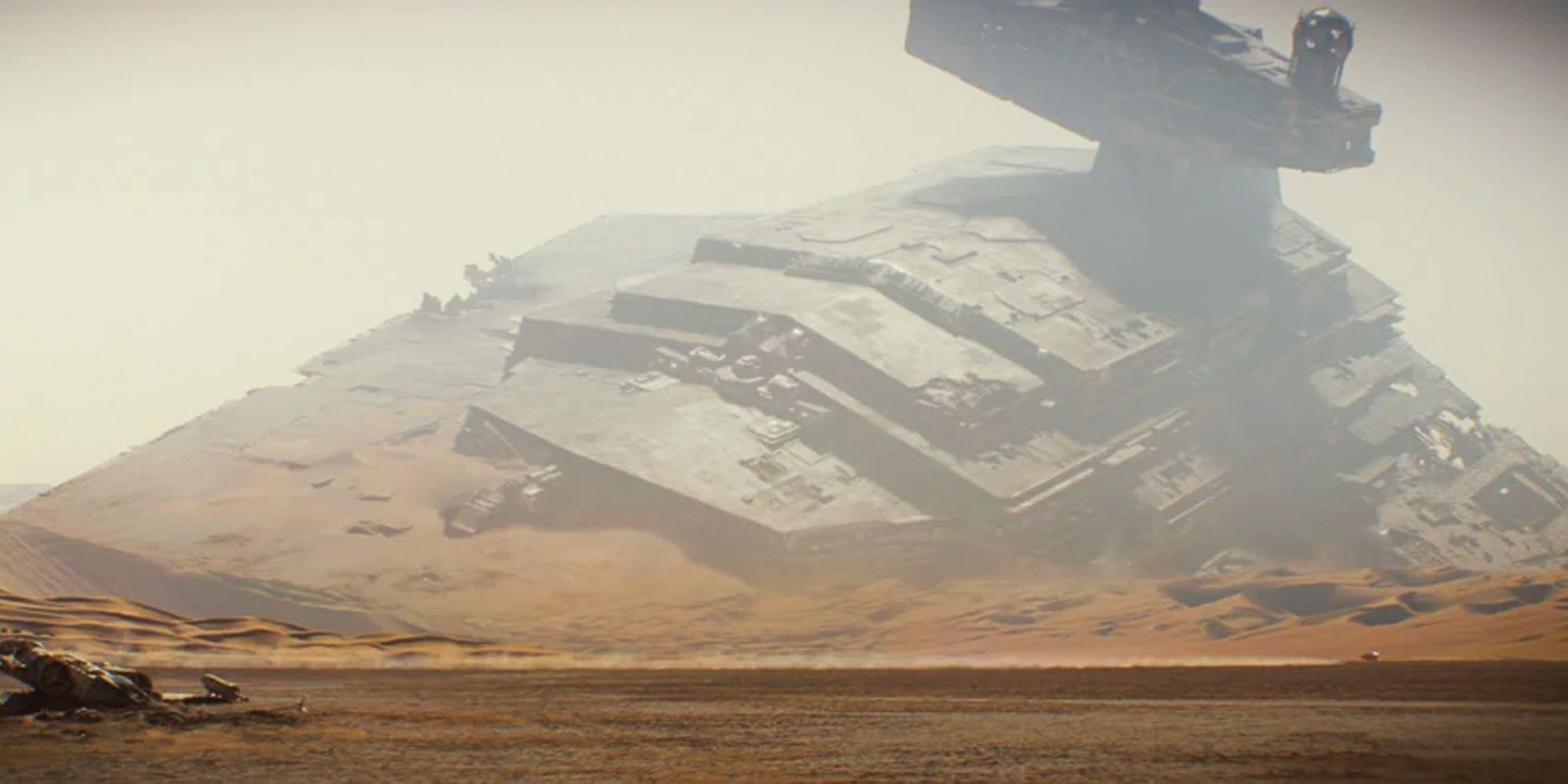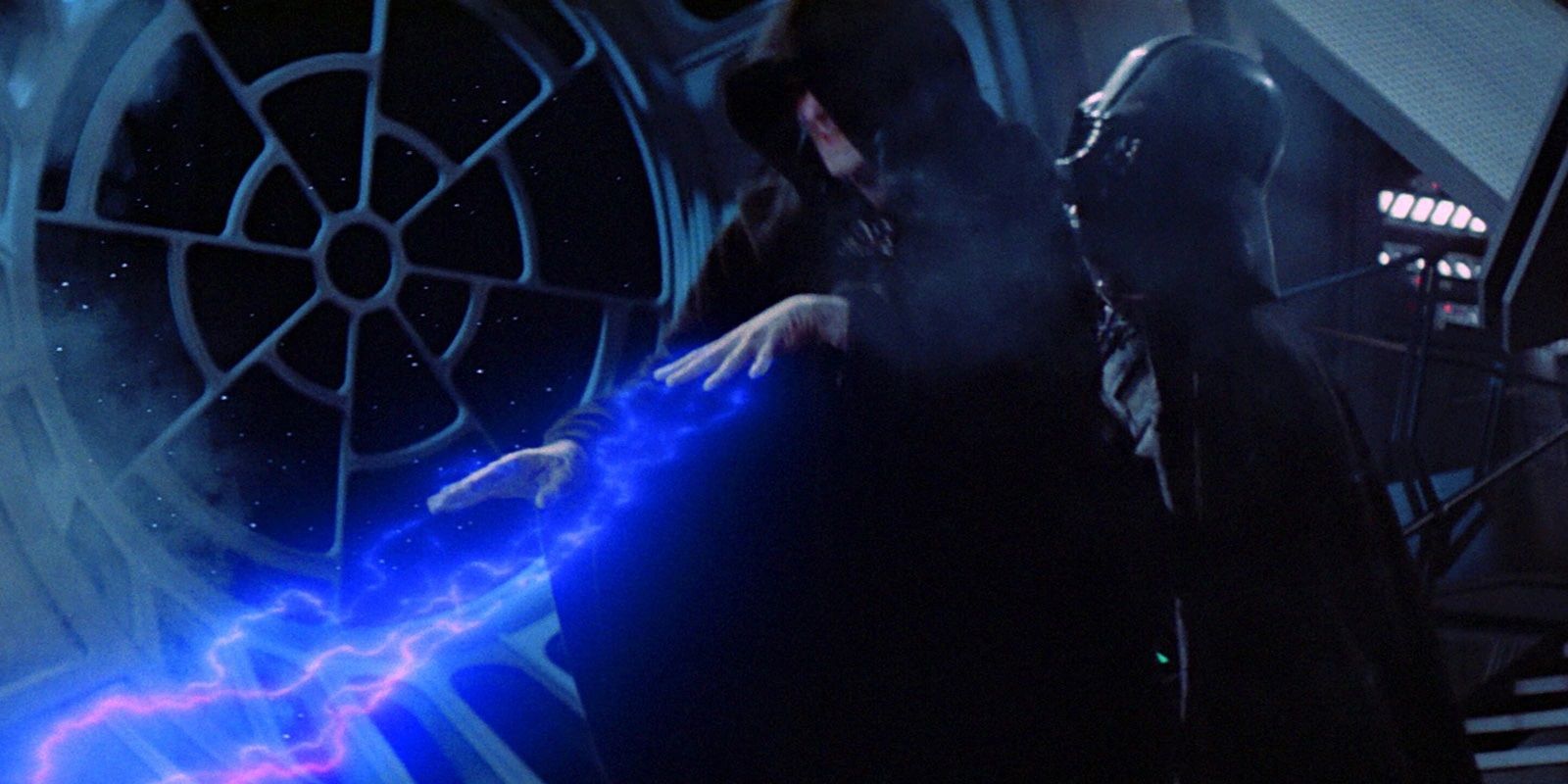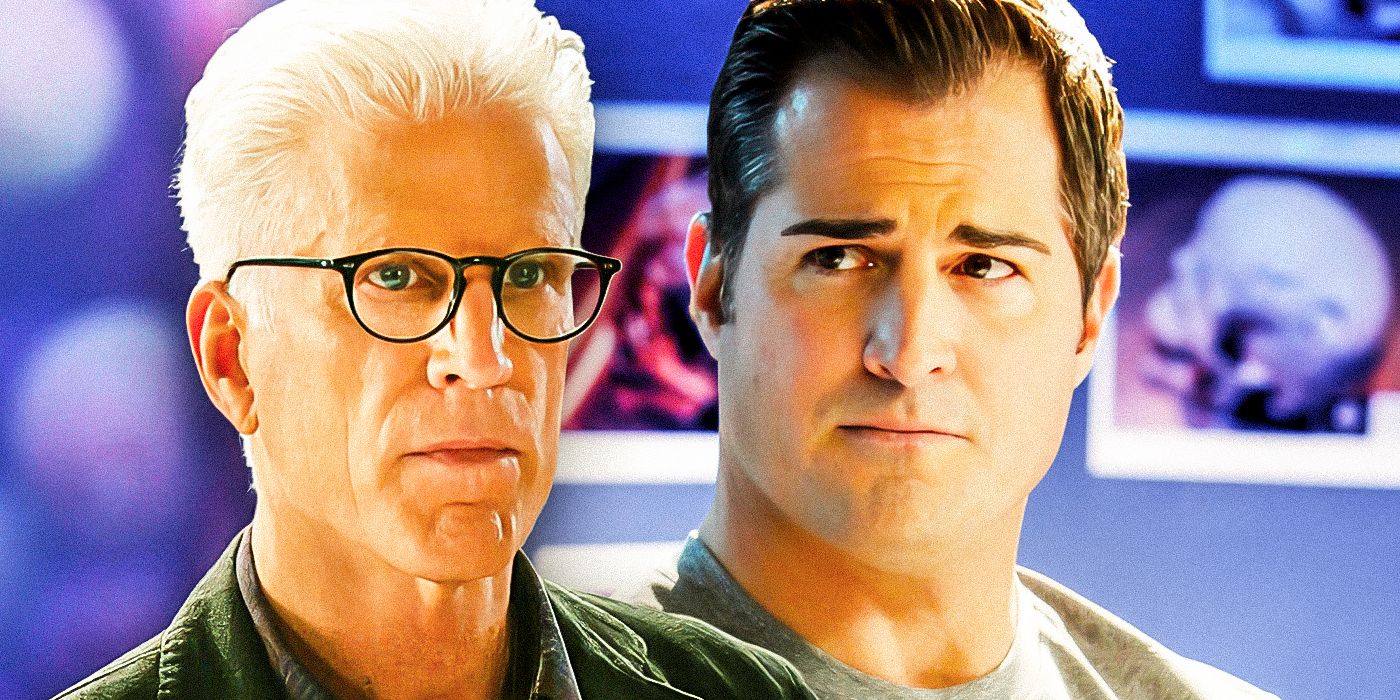Summary
- Palpatine’s contingency plans weren’t for the Rebellion, but to protect himself from Darth Vader’s threat.
- The dynamic between Sith master and apprentice is inherently antagonistic, leading to Palpatine’s fear of Vader.
- Palpatine’s hidden cloning and Operation: Cinder plans reveal his true fear of losing power to Vader.
Emperor Palpatine had innumerable plans in place throughout his Star Wars tyranny, but his contingency and cloning plans in the event of his death prove that it wasn’t the Rebellion Palpatine was afraid of—it was Darth Vader. Throughout Star Wars movies and TV shows, perhaps no greater threat has existed than Palpatine and Vader. Not only are they two of Star Wars’ most powerful Sith, but they are also two of Star Wars’ best duos, despite all the damage and carnage they caused, in terms of what they were able to accomplish.
However, their strength together didn’t prevent the fatal flaw of all Sith masters and apprentices. Although the Sith Rule of Two has proven more complex than Yoda’s description that there are only ever two Sith, a master and an apprentice, the dynamic between a master and apprentice can never truly be symbiotic. Instead, the Sith master represents the apprentice’s greatest obstacle, and the apprentice represents the master’s biggest threat. This very crux led Palpatine to create a series of contingencies that prove his fear stemmed not from growing Rebel sentiments but from Darth Vader.
The Empire’s New Slogan Sets Up A Future Beyond Palpatine – & The Emperor Would Hate It
Star Wars: Tales of the Empire, Star Wars’ upcoming Disney+ TV show, introduced a new Imperial motto, and it doesn’t center on Emperor Palpatine.
Palpatine Never Feared The Rebellion – So Why Did He Have So Many Contingencies?
Emperor Palpatine/Darth Sidious
- Died
- Star Wars: Episode IX- The Rise Of Skywalker
Although the Rebellion was a key factor in the Empire’s ultimate demise, Palpatine was largely unconcerned with their activities throughout the Dark Times. While this may partially have been hubris, it also reflects both what Palpatine valued and what he feared. Palpatine wasn’t afraid of the Rebellion because he perceived true power as coming from the Force. He had already witnessed in the closest proximity how wars play out during his time as Chancellor throughout the Clone Wars. What really threatened to topple his recently acquired power was Force-users or, more specifically, the Jedi.
This makes sense, given that so many of the Empire’s early efforts were to eradicate the Jedi. Of course, this began with Order 66 in Star Wars: Episode III – Revenge of the Sith, which nearly did successfully eradicate the Jedi. Even following Revenge of the Sith, however, the Empire focused its efforts on killing the remaining survivors of Order 66 and identifying and killing even non-Jedi Force users. This also explains why Luke Skywalker posed such a threat in Palpatine’s eyes; he saw Luke as the first serious threat the Empire had faced.
However, Luke wasn’t the first threat Palpatine and his power had faced. Instead, Palpatine’s greatest personal threat had fought right by his side for nearly twenty years. As Palpatine’s Sith apprentice, Vader was a constant danger to Palpatine’s status both as Sith master and Emperor. By nature of the Sith, Palpatine was aware that Vader was no doubt plotting Palpatine’s demise so he could finally take power. In truth, Vader had already proven that he had such a plan, telling Padmé in Revenge of the Sith that he could overthrow him.
Palpatine’s greatest personal threat had fought right by his side for nearly twenty years.
There Was Only One Person Palpatine Feared: Darth Vader
Anakin Skywalker/Darth Vader
- Died
- Star Wars: Episode VI – Return Of The Jedi
Given the threat Vader posed, he was the only person Palpatine really feared. While Palpatine was aware that Rebels may rise up—in fact, he surely anticipated it—he was likely also aware, in light of the Clone Wars, that the battle would be fought between two sides. Vader posed a threat to Palpatine himself very specifically. Indeed, Vader’s plan would have been to keep everything that Palpatine had been but take it for himself, killing Palpatine in the process. This would certainly have been the thing that Palpatine truly feared.
Moreover, while the Rebellion was coming up against an entire Imperial structure Palpatine had methodically built, the conflict between Vader and Palpatine would have been one of raw power. Vader was particularly daunting in this case. As Palpatine had grown in power, so too had Vader. However, Vader had a number of other elements in his favor. For one, Vader was said to be the one prophesied in the Chosen One prophecy. On the one hand, that meant he wielded incredible power. On the other, it meant he was destined to destroy Palpatine.
Vader’s history also made him an incredible threat to Palpatine. Although the suit had confined him and weakened certain aspects of his power, such as by requiring him to re-learn lightsaber skills in a new body, Vader’s volatility and youth still posed unique dangers to Palpatine. Palpatine was also well aware that he had lied to Anakin/Vader about a number of things, his role in Padmé’s many assassination attempts and his deceptions about the nature of the Jedi chief among them. Palpatine surely knew that, if discovered, Vader would destroy him.
Palpatine Kept His Cloning Plans A Secret From Darth Vader
One of the most prominent of Palpatine’s contingencies was Project Necromancer, his cloning plan that ensured his resurrection in the case of his death. The plan was first mentioned in The Mandalorian, but it wasn’t until Star Wars: The Bad Batch season 3 that the full scope of the plan was revealed. As seen in Star Wars: The Rise of Skywalker, Palpatine’s intention was always to return following his inevitable death. To pull that off, he executed a very elaborate project, creating Force-sensitive clones into which he could transfer his spirit.
Arguably the most fascinating aspect of this plan was that Palpatine kept Project Necromancer from Darth Vader. Although the two were theoretically working in unison, the Rule of Two meant that Palpatine never truly saw Vader as an ally. Rather, Palpatine, knowing he intended to fully subvert the Rule of Two and instead achieve immortality, saw Vader only as an obstacle and danger to his plan.
This also explains one massive lingering confusion during the Dark Times. As The Bad Batch has shown, Project Necromancer required the Empire to abduct Force-sensitive children for testing; ultimately, they needed the blood of both clones and Force-sensitive people to successfully create clones that could hold Palpatine’s spirit. However, this seems in direct contradiction to Vader’s own plan with the Inquisitors.
1:58
Star Wars: All 14 Inquisitors In Canon Explained
Star Wars’ Inquisitors were Darth Vader’s elite death squad of Jedi-killing dark side users. Who were these Imperial agents and what were their fates?
With the Inquisitors, Vader’s objective was to hunt down and destroy any remaining Jedi and even Force-sensitive non-Jedi, essentially eradicating anyone with the Force other than Vader, Palpatine, and the Inquisitors. This makes sense from Vader’s perspective, given that Palpatine had identified the Jedi as the problem and promised the Empire in its earliest moments that the remaining Jedi would be “hunted down and defeated.” However, it doesn’t make sense for both Project Necromancer and Vader’s Inquisitor plan to be happening simultaneously.
It doesn’t make sense for both Project Necromancer and Vader’s Inquisitor plan to be happening simultaneously.
Both projects require Force-sensitive people, although often children specifically. However, while Project Necromancer requires the specimens to be alive for experimentation, Vader’s entire aim with the Inquisitors is termination. Moreover, the rationale for a Force-sensitive person being hunted down by Inquisitors versus selected for Project Necromancer has yet to be clarified in Star Wars. It seems impossible that Vader and Palpatine were collaborating on these projects, given how contradictory the two are.
Instead, the most logical explanation for the conflicts between the two projects is Palpatine’s deception. Because Palpatine’s resurrection plan meant preventing Vader from ever usurping his power, he knew it was too risky to reveal his plans to Vader. Vader could have all too easily sabotaged his cloning project and turned on Palpatine in the process, aware that Palpatine would always prevent him from obtaining power. Instead, it was better for Palpatine’s resurrection plan to work in the shadows, identifying Force-sensitive children and locking them away before the Inquisitors identified them.
Palpatine’s Operation: Cinder Would Destroy Darth Vader’s Empire
Fascinatingly, Project Necromancer isn’t the only plan that Palpatine was working on behind Darth Vader’s back. Perhaps even more bewildering than Palpatine’s resurrection was Operation: Cinder, Palpatine’s plan to have the Imperial remnants wiped out in the event of his death. This is perhaps Palpatine’s most mind-boggling project, proving that, rather than believing in the ideals of the Empire, Palpatine sought power only for himself.
Culminating in the Battle of Jakku, the wreckage of which could still be seen in Star Wars: The Force Awakens, Operation: Cinder was meant to ensure that, once Palpatine was gone, the Rebels were destroyed but also that none of the other Imperial higher-ups could step into the Emperor’s role. Notably, this included Darth Vader, who would presumably have been the heir to the Empire. Operation: Cinder proves beyond a doubt that Palpatine never planned on allowing the Empire to move along without him, especially under Darth Vader’s rule.
Again, this comes down to a fear of Vader. Palpatine knew that, with the hope of ruling the Empire and becoming the Sith master, Vader may have been more motivated to destroy Palpatine. While Vader clearly didn’t know about Operation: Cinder or Project Necromancer, Palpatine nevertheless did guarantee that Vader wouldn’t have the opportunity to rule as Emperor. In fact, given Operation: Cinder, Palpatine proved that he would much rather literally tear it all down than allow Vader to rule in his place.
Yet this just reinforces that Vader was the true threat, not the Rebels. Each of Palpatine’s major plans was specifically kept from Vader, who should have been Palpatine’s one true ally. Moreover, each plan was meant to keep out those who would have sought power from inside the Imperial system. While, yes, Operation: Cinder would also have taken down the Rebellion, its emphasis was on preventing any Imperials from ruling, including Darth Vader. This also meant that, once Palpatine did return, he wouldn’t need to fight for power; there would be no new Emperor to overthrow.
Palpatine Foresaw Darth Vader’s Betrayal… But Not The Reason For It
Ironically, despite all of Palpatine’s planning, secrecy, and deception, he didn’t anticipate how or why Darth Vader would betray him. In the end, it was something Palpatine could never have imagined or planned for. Rather than seeking power, Darth Vader killed Palpatine out of love for his son. As Palpatine electrocuted Luke Skywalker with his Sith lightning in Return of the Jedi, Vader grabbed Palpatine, lifted him up, and threw him into a reactor shaft, killing him (or seeming to, despite his resurrection).
Rather than seeking power, Darth Vader killed Palpatine out of love for his son.
It wasn’t until Vader saw Luke, his son, in pain and in danger that he was willing to break decades of loyalty to Palpatine. This truly was a great form of irony, as Palpatine had long attempted to anticipate where Darth Vader’s betrayal—a staple of Sith apprentices—would come from. In the end, it stemmed from the most unlikely of sources and had nothing to do with Vader wanting to rule the Empire, prevent Palpatine’s return, or become the Sith master. It came only from love.
While Palpatine ultimately did return, the underlying fears in his various plans and projects reveal what Palpatine was truly afraid of. In truth, the Rebellion concerned him very little. In stark contrast, Darth Vader troubled him significantly because of his position as Palpatine’s Sith apprentice. In the end, it’s clear that Emperor Palpatine’s greatest fear was not the Rebels but rather Darth Vader, leading him to conceal his various plans about his imminent return and his intentions to never allow another to rule the Empire.
-

Star Wars: The Bad Batch
Star Wars: The Bad Batch is an action-adventure animated series set after the events of The Clone Wars, following Clone Force 99 (a.k.a. the Bad Batch.) Finding themselves immune to the brainwashing effects of Order 66, the Bad Batch become mercenaries for hire while outrunning the empire, now seeing them as fugitives of the law.
-

Star Wars: Episode VI – Return of the Jedi
The third film released and the sixth film chronologically in the Star Wars Saga, Star Wars: Episode VI – Return of the Jedi is a sci-fi epic adventure film that continues the adventures of Luke, Leia, Han, and friends as they battle against the Empire. After a narrow escape but crushing defeat at the hands of the empire, the rebel alliance learns that a new Death Star has been constructed above the moon of Endor. With the war reaching its conclusion, the heroes will team with the forest planet’s inhabitants and prepare themselves for one final showdown with Darth Vander and the Galactic Empire.
ALL STAR WARS MOVIES AND TV SHOWS ARE AVAILABLE TO STREAM ON DISNEY+







